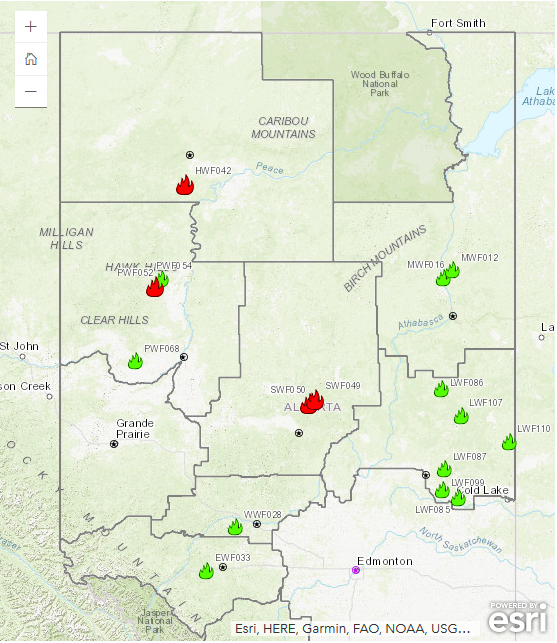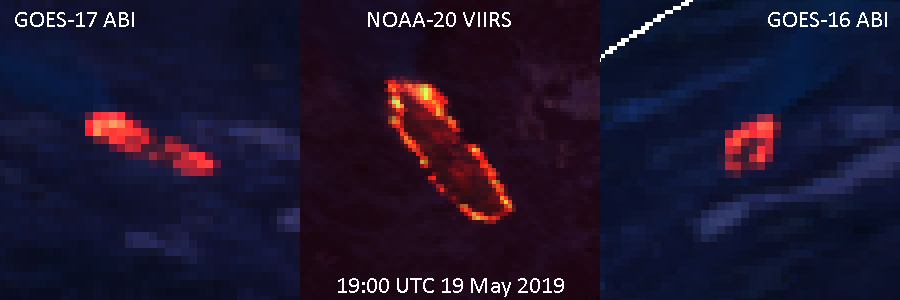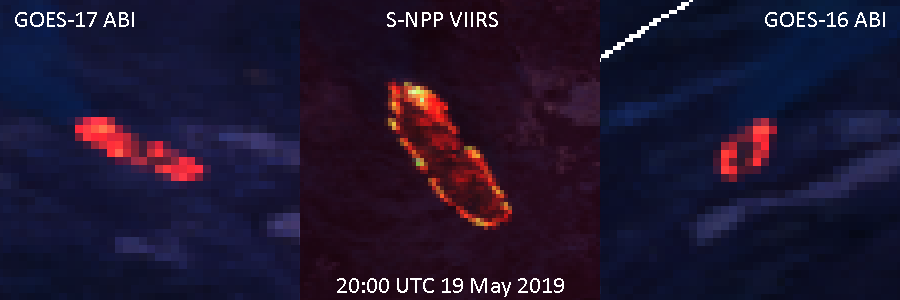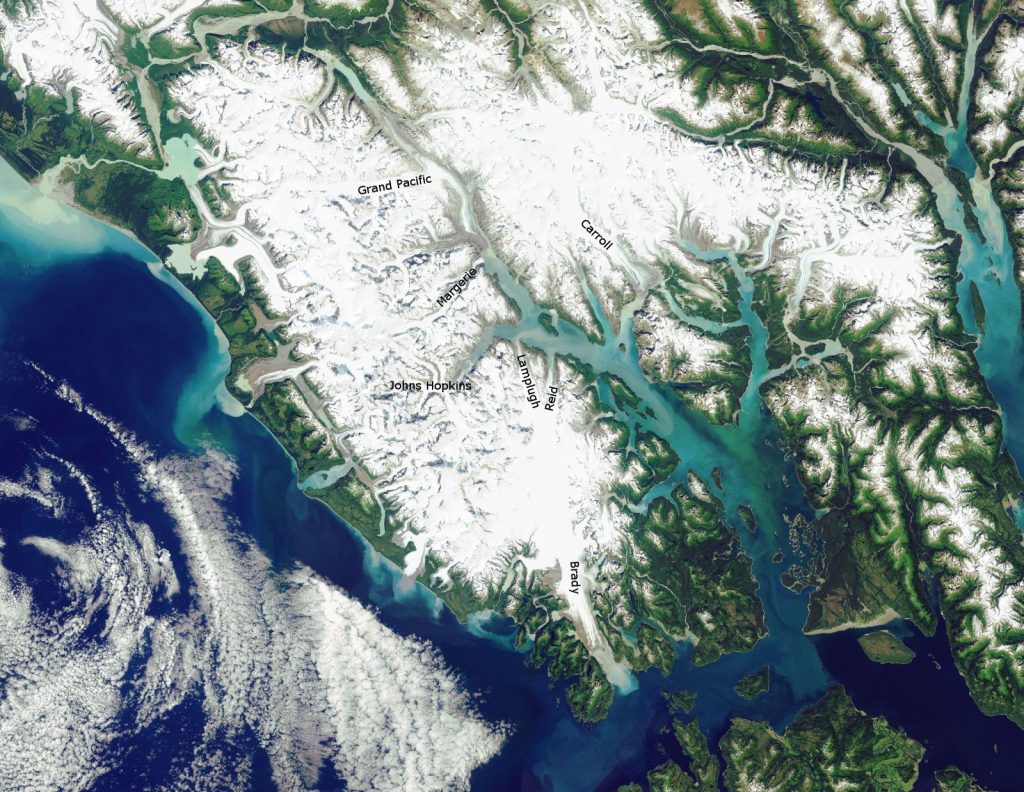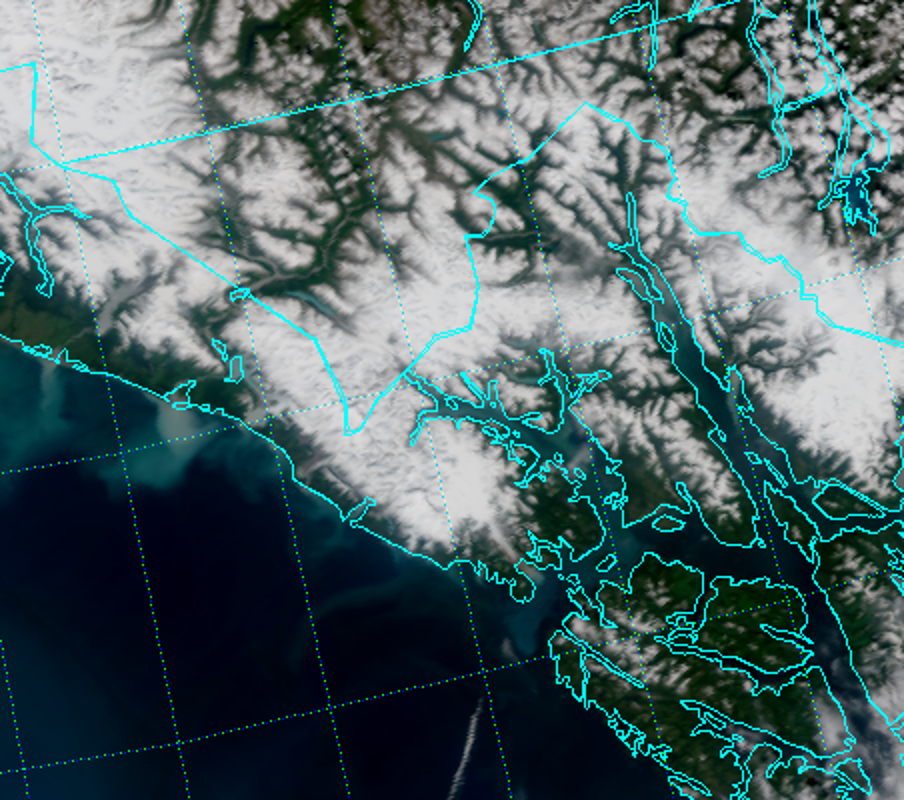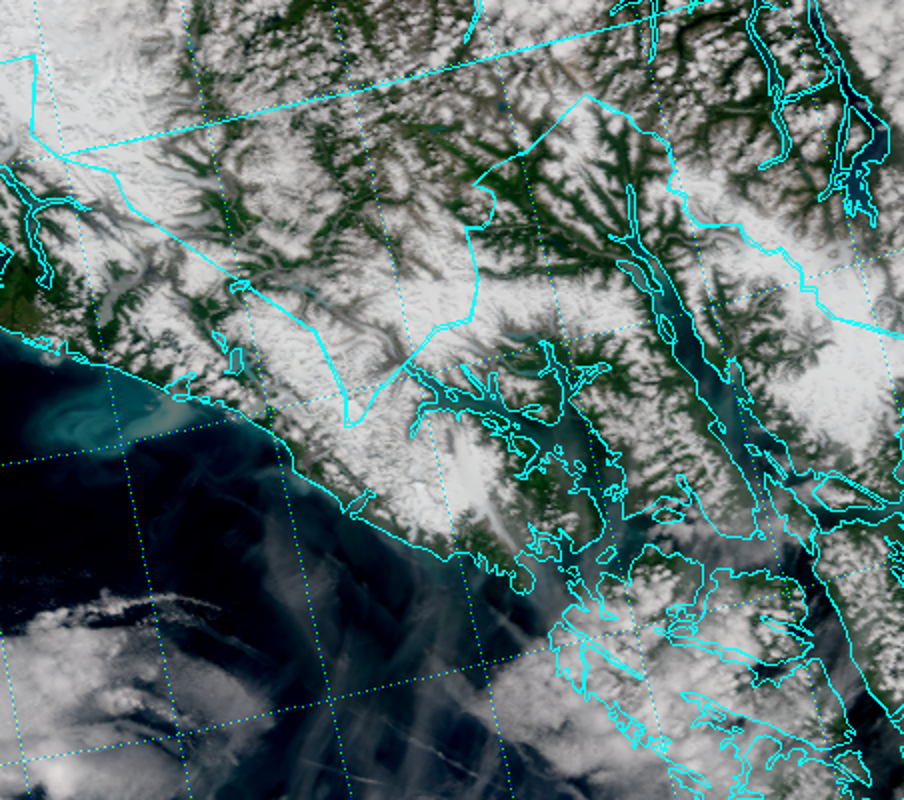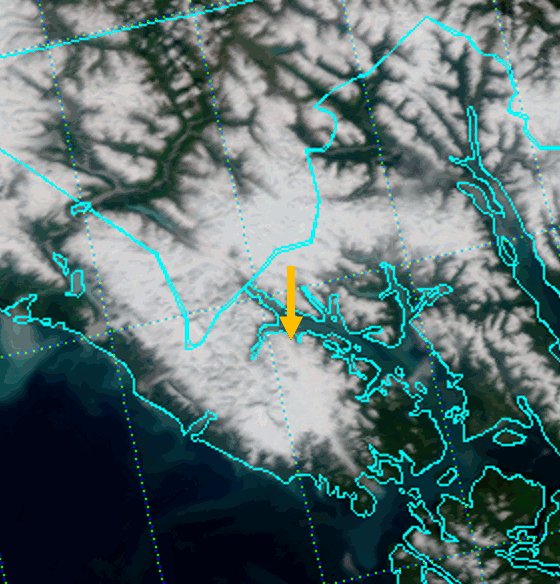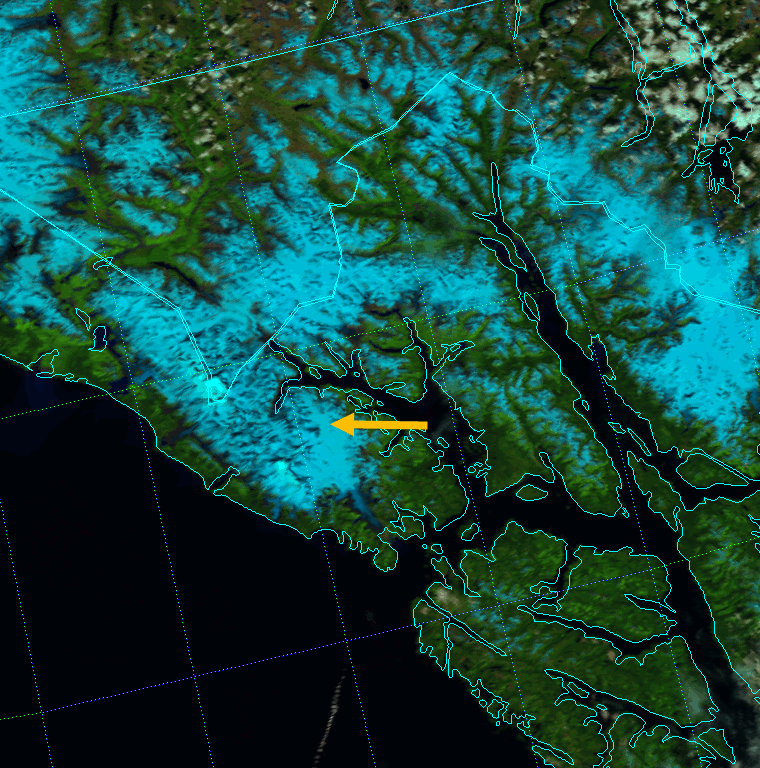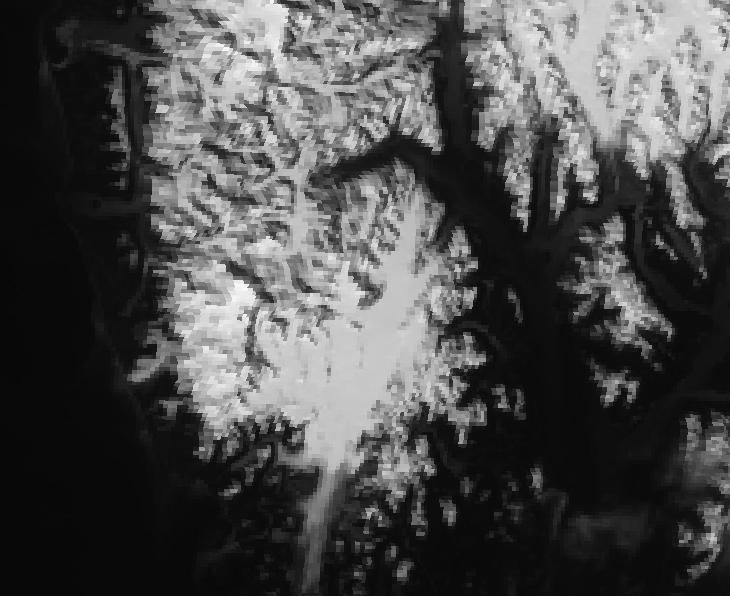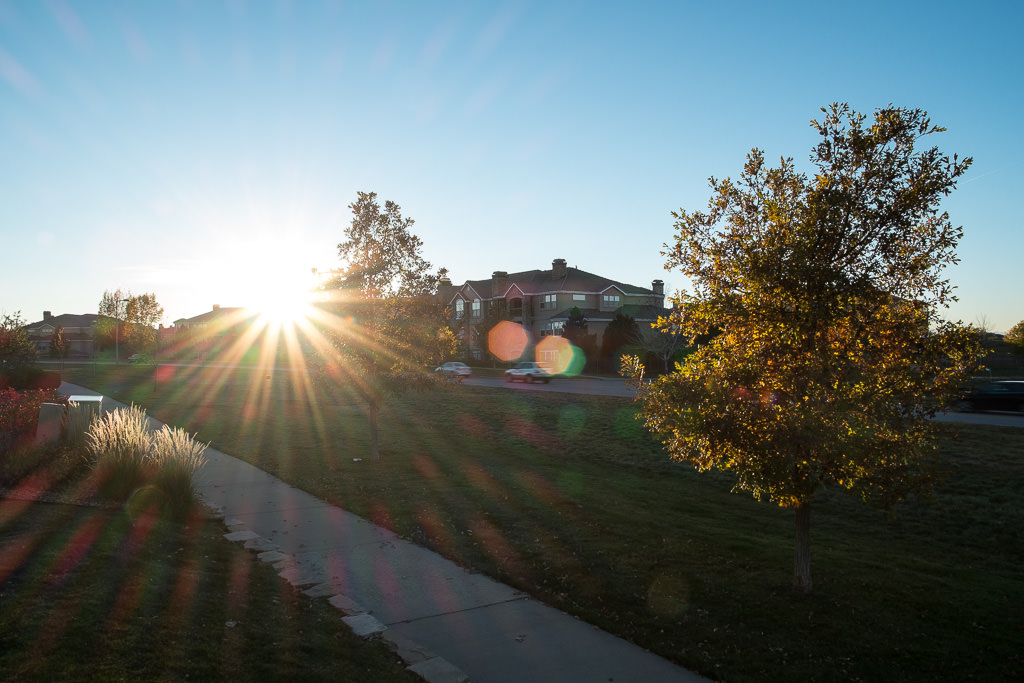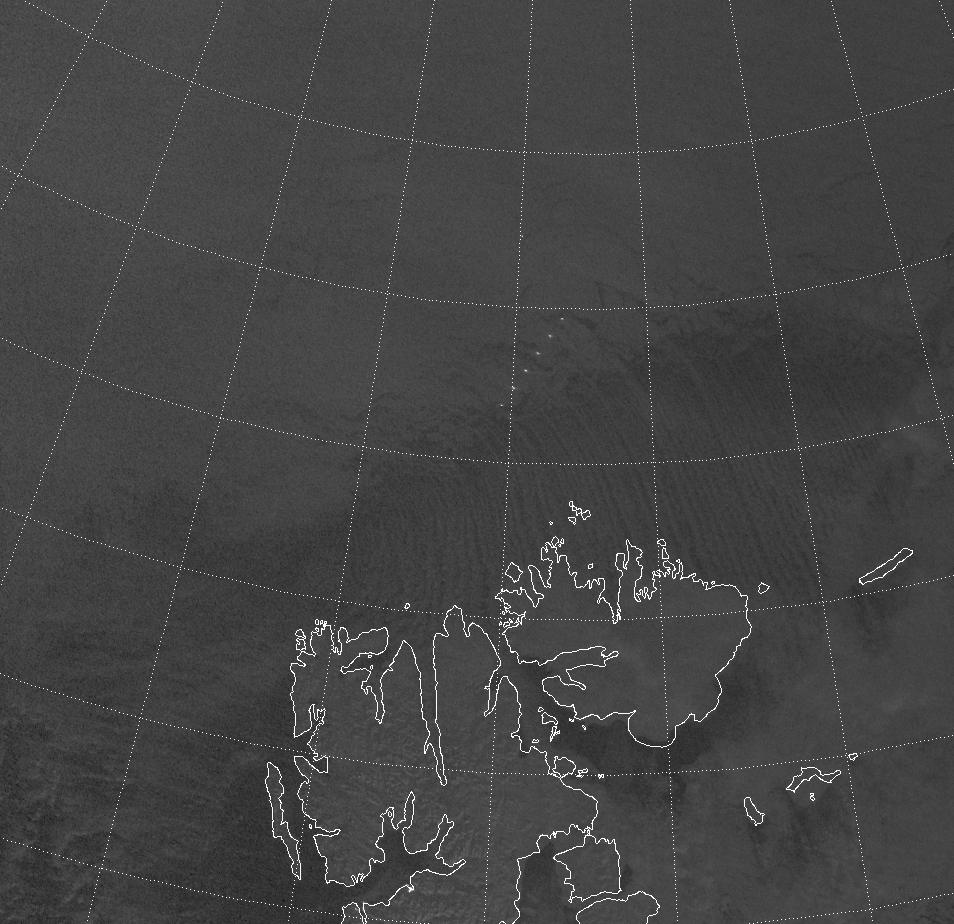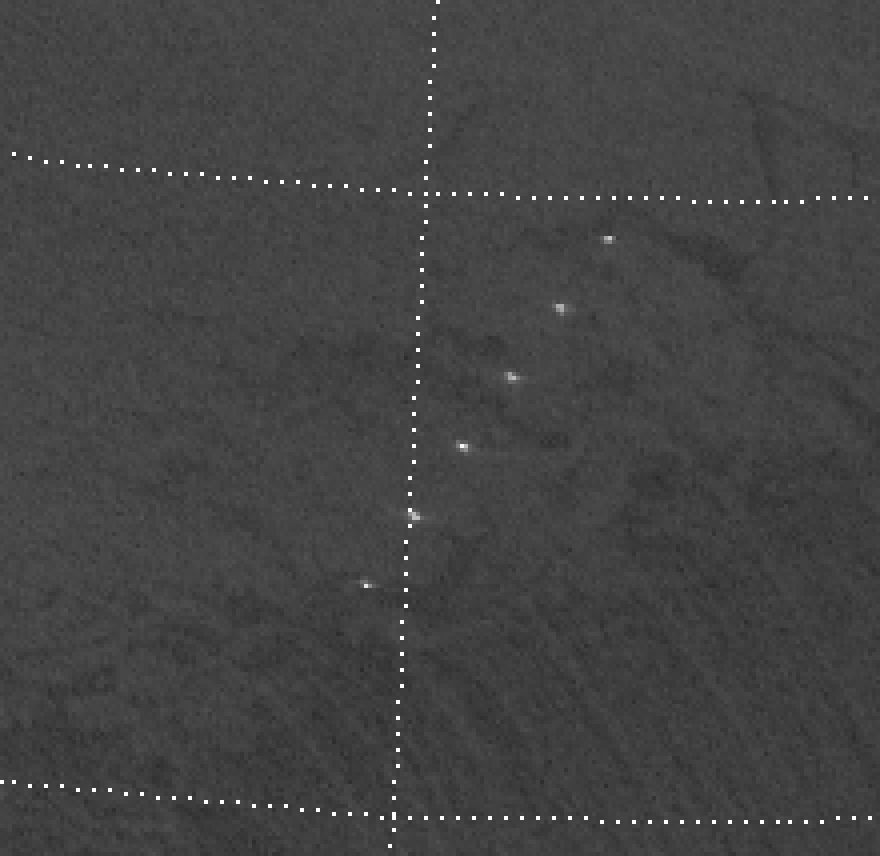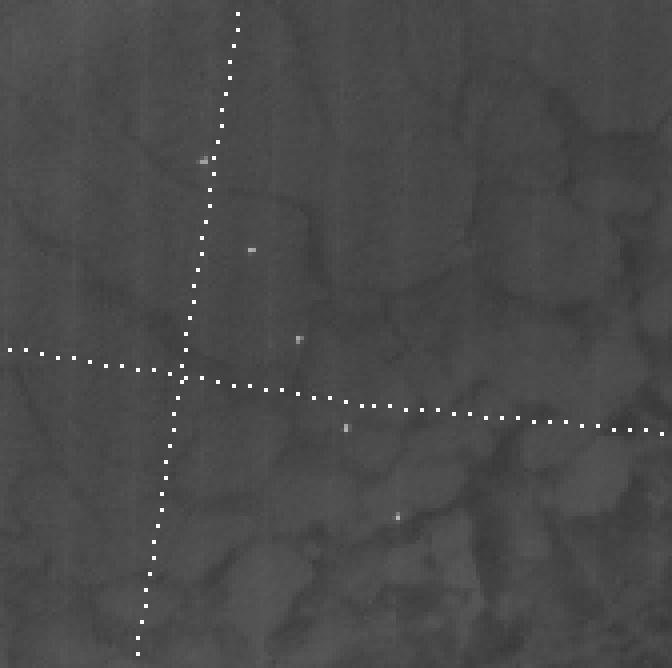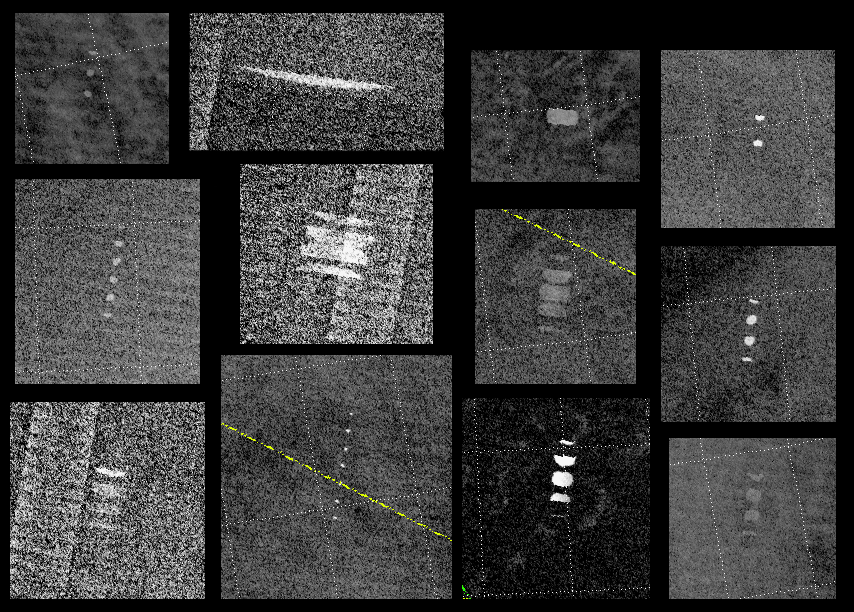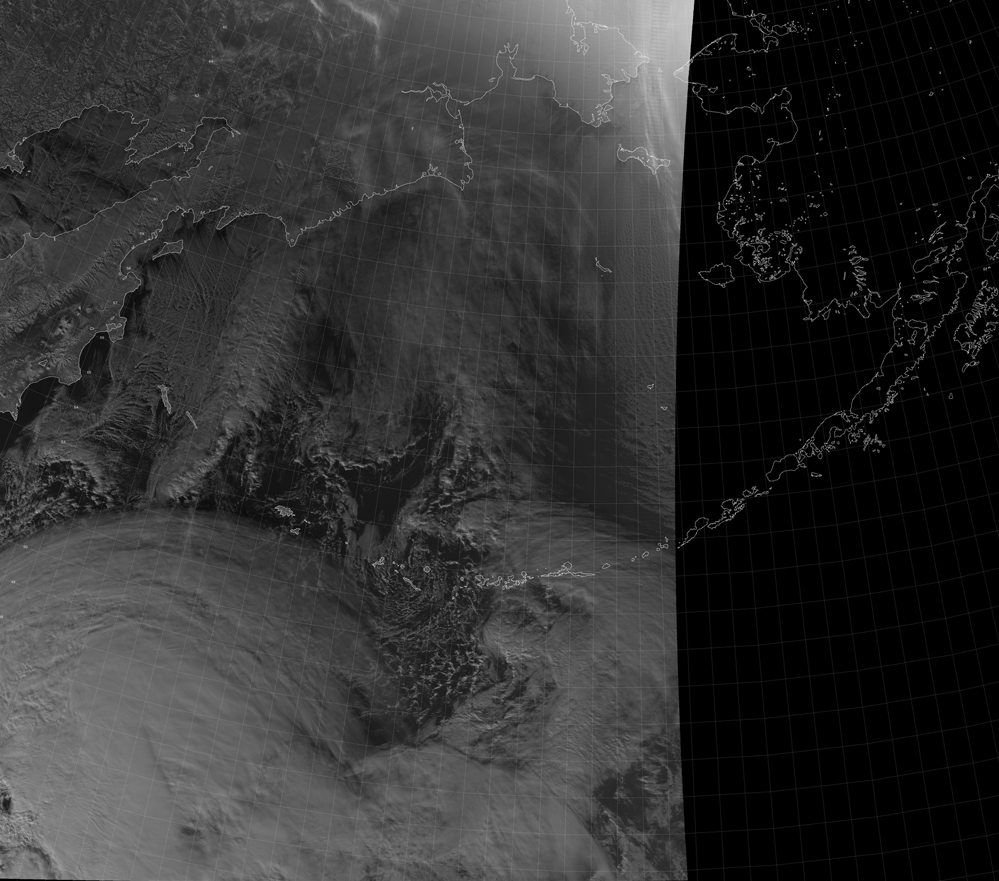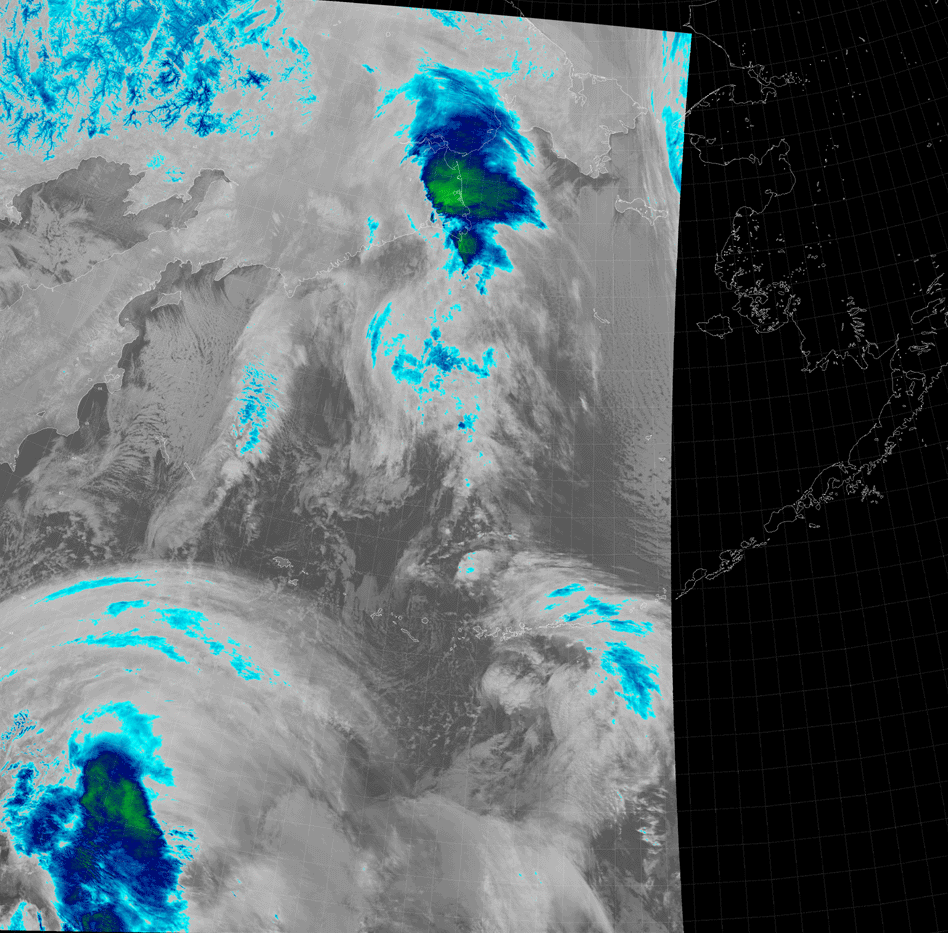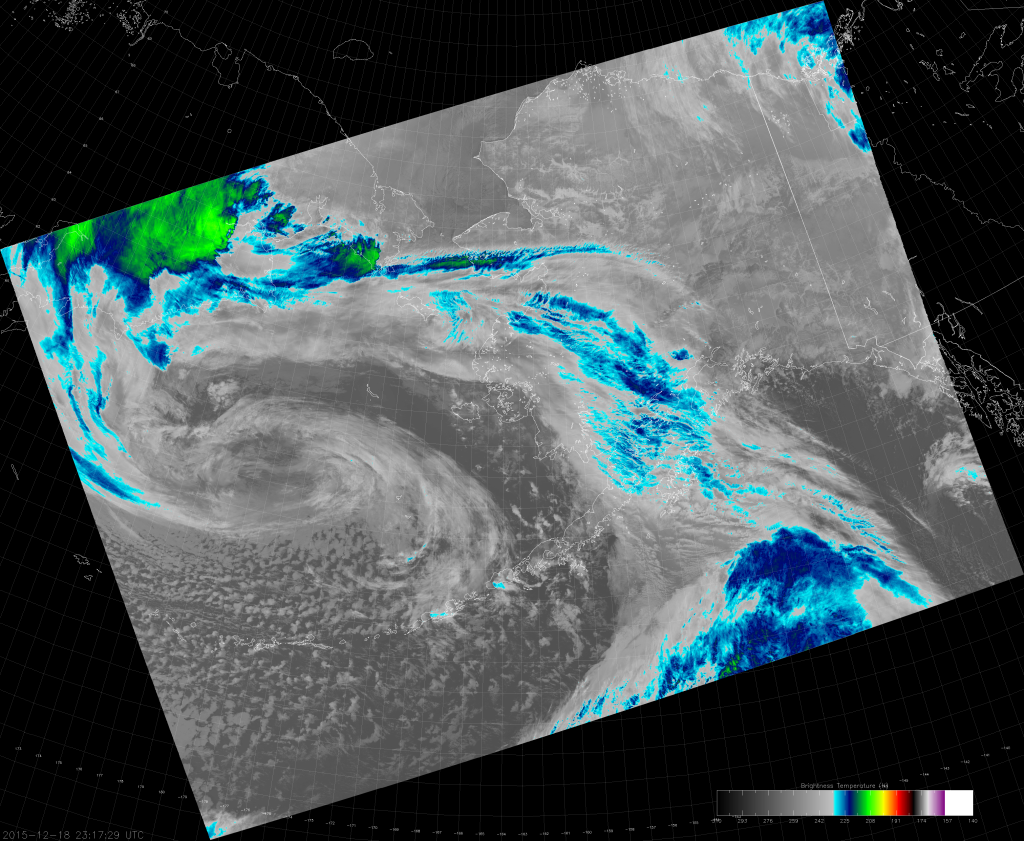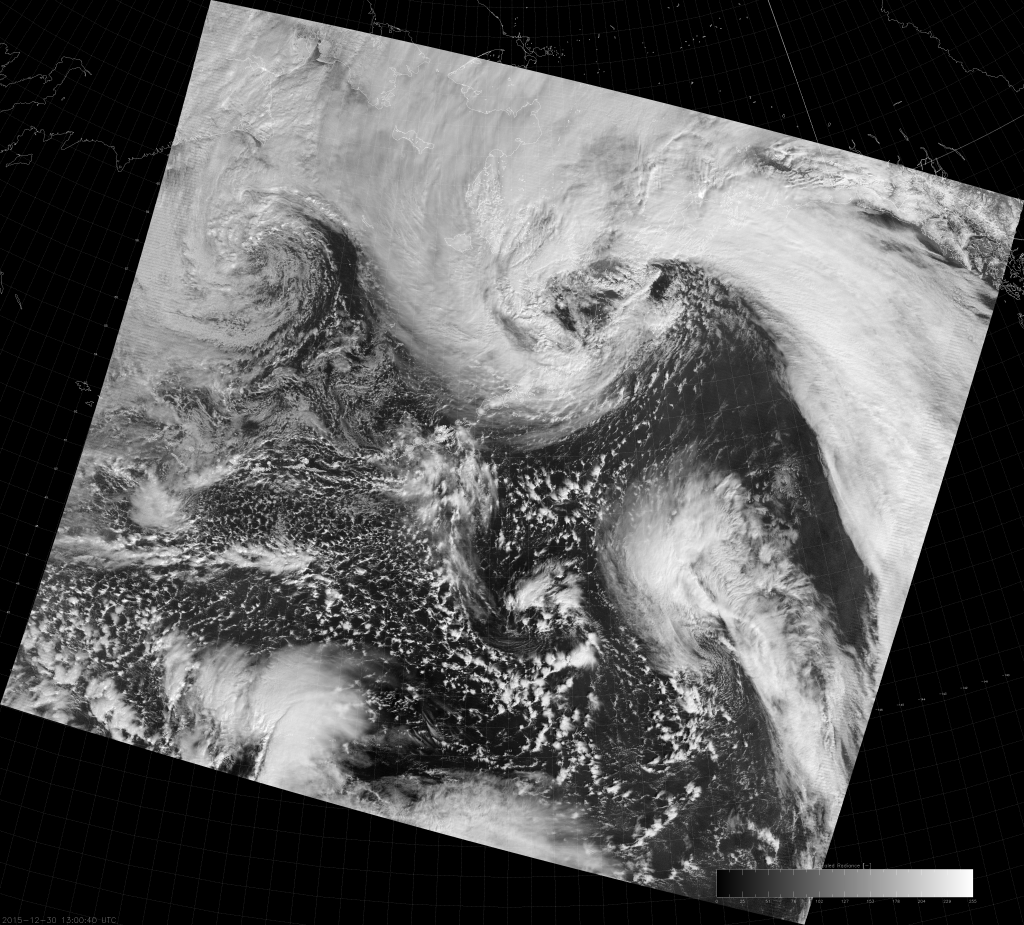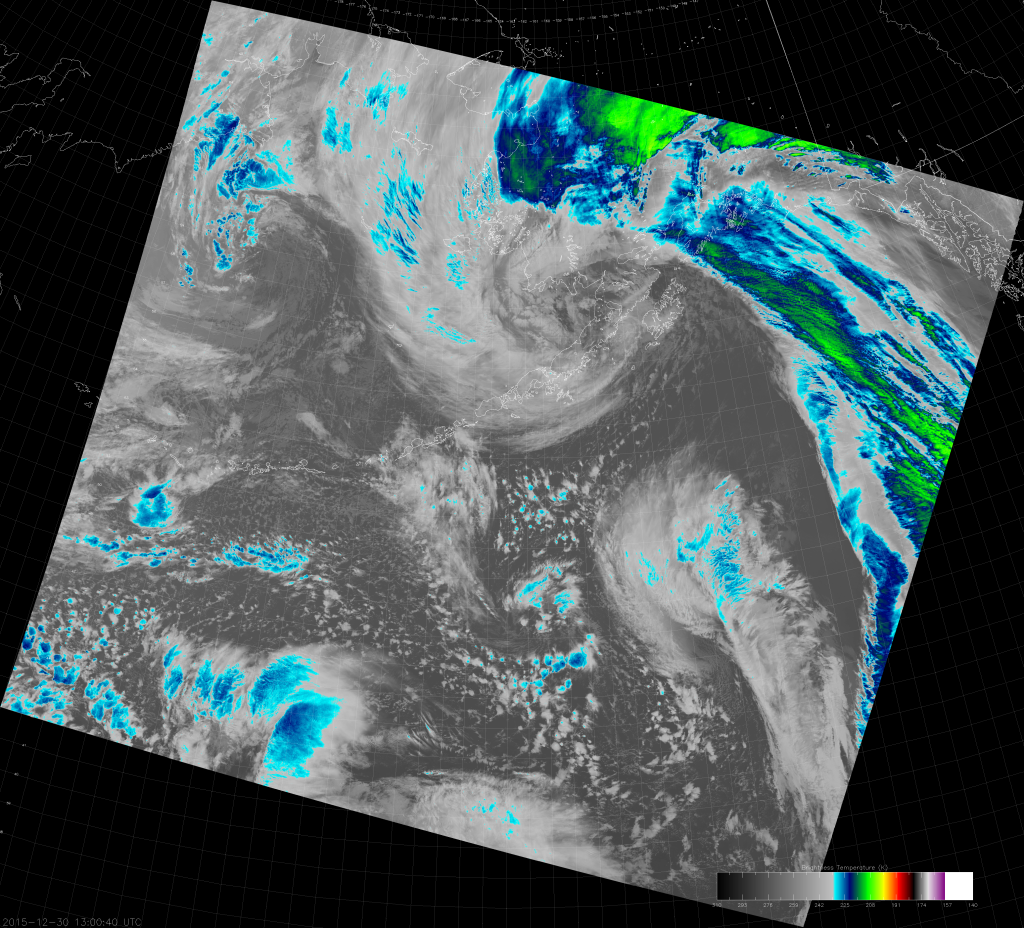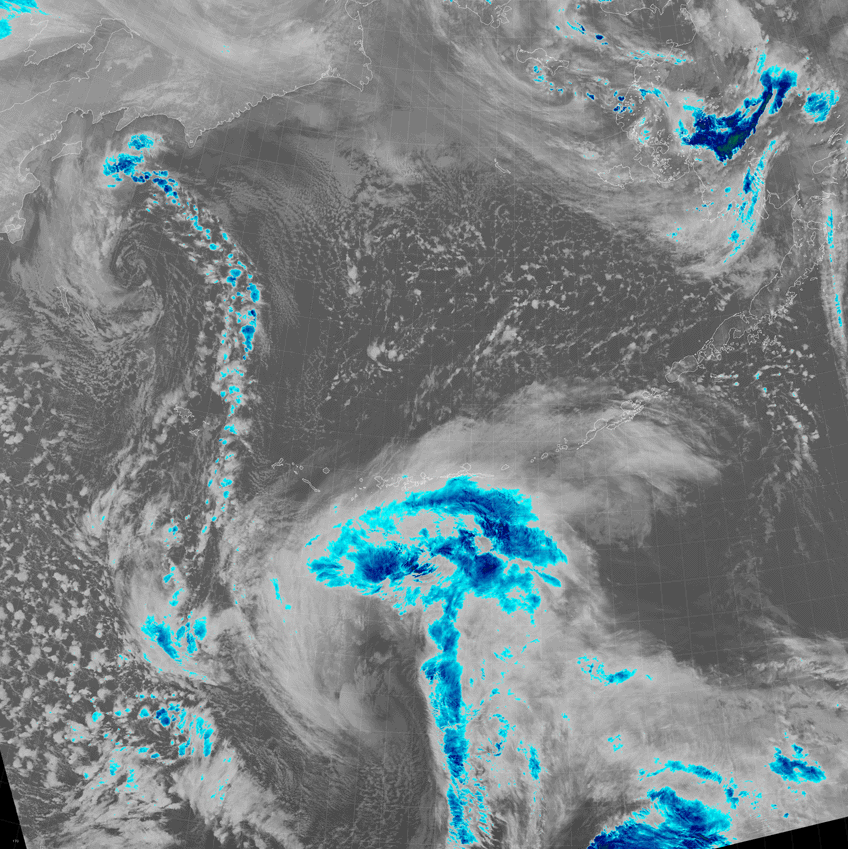Something incredible happened in the Arctic a few days ago. Rather than type it out, I will let the World Meteorological Organization (WMO) explain it:
In case you’re wondering where Verkhoyansk is, you can look it up on Google Maps.
If that temperature is verified, it would be the hottest temperature ever recorded north of the Arctic Circle. To put that 38 °C into perspective, that was only 2 °C off from the high temperature in Phoenix, AZ on 20 June 2020 – a place where 40 °C is normal in the summer. It’s also worth reiterating how unusual it is for any location to average 8-10 °C (15-20 °F) above normal for an entire month. Russia as a whole – by far the largest country on Earth – has averaged 8 °C above normal for the entire first half of 2020!
If you clicked that last link, you saw an excerpt of the video above, plus more information on the unusual impacts of this heatwave. The clouds of mosquitoes. The collapsing buildings due to melting permafrost. (One of the largest oil spills ever in the Arctic happened in May, caused by melting permafrost.) And, an even more alarmist impact of the heat: “zombie fires“.
That’s right – if you didn’t have enough with the coronavirus or the murder hornets or the melting Arctic, you can now panic about zombie fires. In all seriousness, the silly name has been applied to the phenomenon of fires in peat bogs never really being fully extinguished, and continuing to smolder deep down below the ice and snow that covered it up all winter. Then, when a heatwave happens the next summer, the smoldering turns to re-ignition of the fire, and it once again appears on the surface.
Fires have been happening on a massive scale throughout Siberia this summer (and they’re probably not all zombie fires). But, we have a tool to observe them from satellite: Polar SLIDER.
I’m sure there may be a few of you who are already familiar with the website. For those who aren’t, here’s a brief synopsis: Polar SLIDER is designed to show the most recent VIIRS imagery available anywhere on Earth in as close to real-time as possible. Images from individual orbits from both Suomi-NPP and NOAA-20 are stitched together to create hemispheric composites that always feature the most recent imagery on top. The way the orbits work, when Suomi-NPP is crossing over into the Southern Hemisphere, NOAA-20 is crossing into the Northern Hemisphere (and vice versa). By combining imagery from both satellites, there is a ~50 minute refresh over the poles, giving a quasi-geostationary satellite view of each pole. Imagery is available at six different zoom levels, separated by factors of 2, so you can zoom in to see full resolution VIIRS imagery anywhere on Earth.
Here’s an example of Polar SLIDER, reduced in size to play well with this blog software, showing our GeoColor product (True Color imagery during the day, blended with the Day/Night Band and a low cloud detection algorithm at night) over Siberia on 23-24 June 2020:

How much smoke can you see? Did you count the plumes? Did you see the swirl in the smoke at about 70°N, 140°E? (For reference, Verkhoyansk is near 67°N, 133°E.)
That loop covers approximately 30 hours in the Arctic and, since we’re so close to the summer solstice, you can estimate the location of the Arctic Circle, even though it isn’t plotted.
Even those of you who have heard of (or seen) Polar SLIDER before might not be aware of the recent upgrades made in May 2020. For the first 18 months of its existence, Polar SLIDER had all 22 VIIRS channels (DNB, 16 M-bands, 5 I-bands) plus GeoColor (as shown in the loop above) and, occasionally, the I-band Natural Color (aka Day Land Cloud RGB) product. Now, we have added 10 new products, including the most popular RGB composites (the ones that are available from VIIRS, anyway) and two new RGBs for snow monitoring that utilize the 1.24 µm band that are not available on any geostationary satellite. (More information on those is available here.) We’ve also fixed the issues with the Natural Color RGB, making it a permanent fixture, rather than an anomaly.
Among the new products available on Polar SLIDER is what we call Natural Fire Color (and the National Weather Service calls “Day Land Cloud Fire RGB“), made from VIIRS bands I-1 (0.64 µm, blue), I-2 (0.86 µm, green) and I-4 (3.7 µm, red). As it is made from VIIRS I-bands, it is available at 375 m resolution around the globe. Here’s what it shows from 22-23 June 2020 over this part of Siberia:
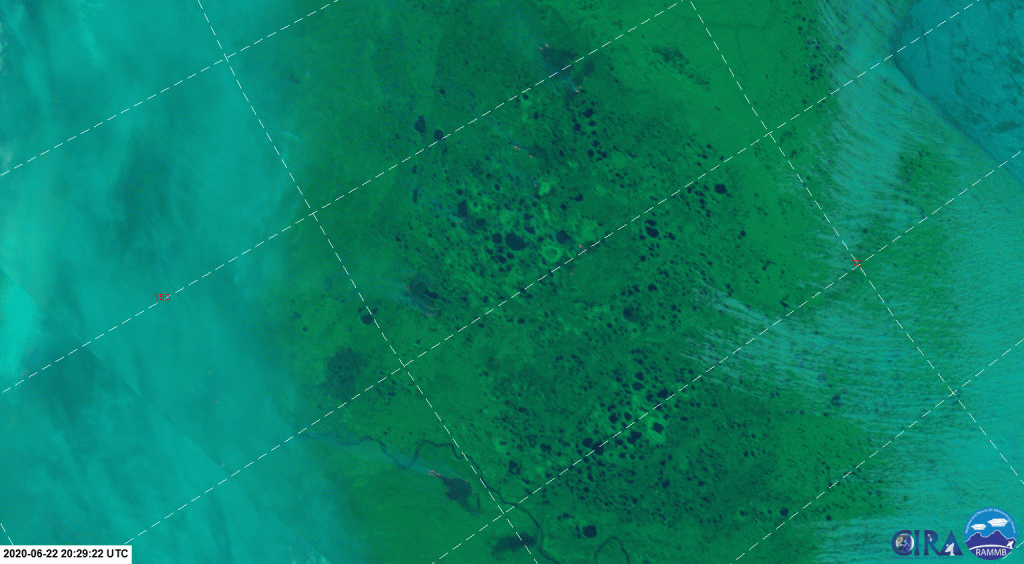
This animation is too large for WordPress. You have to click on it to get it to play. But, I couldn’t resist showing the full resolution imagery. Also, a note about the timestamps on Polar SLIDER: it takes ~50 min for each satellite to cover each hemisphere, and the image times displayed on Polar SLIDER represent the Equator-crossing time as the satellite leaves the hemisphere, which is most likely not the time the satellite was viewing the area you’re looking at.
The Natural Fire Color/Day Land Cloud Fire loop covers a ten hour period from ~ 8:00 AM to 6:00 PM local time (depending on where you are in the scene, it might be 7:00 AM to 5:00 PM), during which time there were 11 consecutive VIIRS overpasses over this region between the two satellites. This is a textbook example of how fires typically die down at night (or, at least, when the sun is hovering over the horizon) and intensify during the heating of the day.
Of course, you can get a better idea of the intensity of the fires by looking at the Fire Temperature RGB, which is also now on Polar SLIDER:
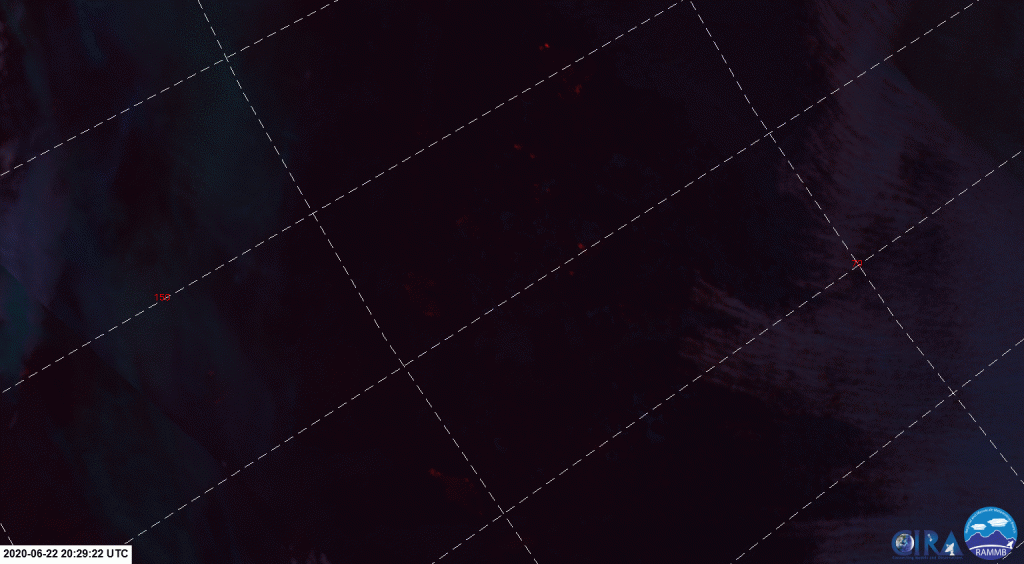
Once again, you have to click on the animation to get it to play.
The Fire Temperature RGB is made with VIIRS M-bands (750 m resolution), so the fires don’t look as crisp when viewed at the 375 m zoom level. But, since it uses more information from fire-sensitive bands in the shortwave IR, it provides a qualitative estimate of fire intensity, not just the locations of the active hot spots. (As fires become more intense, their color changes from red to orange to yellow to white in the Fire Temperature RGB.)
Other differences to note between the two loops are: the Natural Fire Color RGB shows the reddish-brown burn scars more clearly amongst a background of green vegetation; it shows the bluish smoke more clearly; and it shows ice in the Arctic Ocean, which appears nearly black in the Fire Temperature RGB. We’ve covered all of this before, both here and elsewhere. We’ve also covered the importance of VIIRS’ high resolution (compared to geostationary satellites) when it comes to fires before. But, it’s worth looking at again. Compare the loops above with the view from the Advanced Himawari Imager (AHI) on Himawari-8:


You can find a loop of the AHI GeoColor showing the smoke plumes here.
It’s difficult to identify any fires in the AHI Natural Fire Color/Day Land Cloud Fire RGB, given the resolution of the 3.9 µm channel is 2 km at the Equator (more like 3-6 km in this part of the world) – not 375 m like the VIIRS version. Hot spots show up better in the AHI Fire Temperature RGB this far north, because this combination of channels makes the background surface appear darker relative to the pixels with active fires in them, whereas the background is brighter in the Natural Fire Color RGB.
Lastly, because I mentioned new RGBs for snow on Polar SLIDER, one of them has an interesting artifact when it comes to fires. The Snow RGB originally developed by MétéoFrance utilizes the 2.25 µm band as the blue component, making hot spots appear blue:
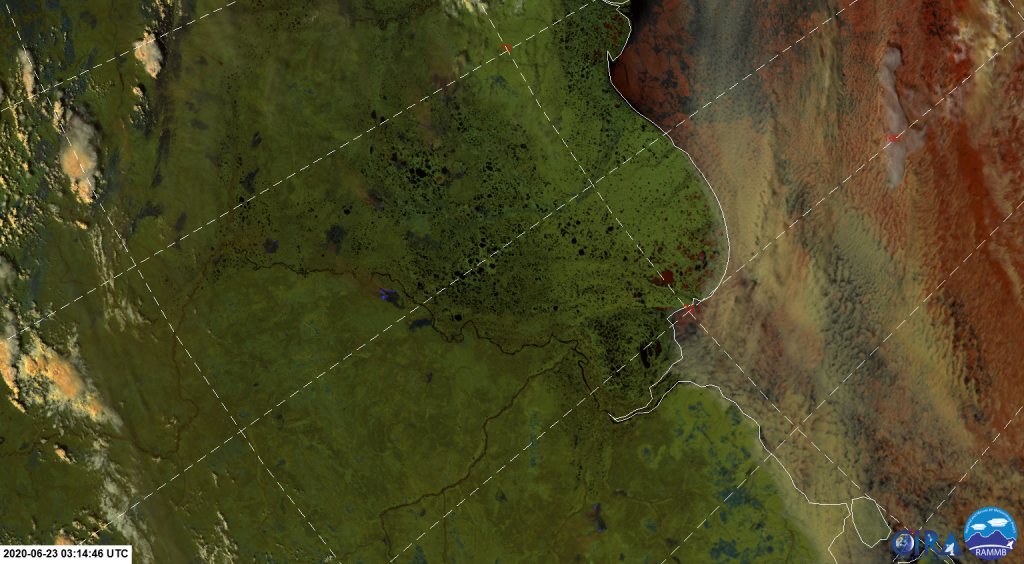
Of course, if you’re looking for fires, don’t reach for the Snow RGB. But, someone, somewhere is going to be looking at the Snow RGB when they spot a couple of bright blue pixels and wonder, “What’s going on here?” And, I’m here to say, “Those are moderately intense fires.”
